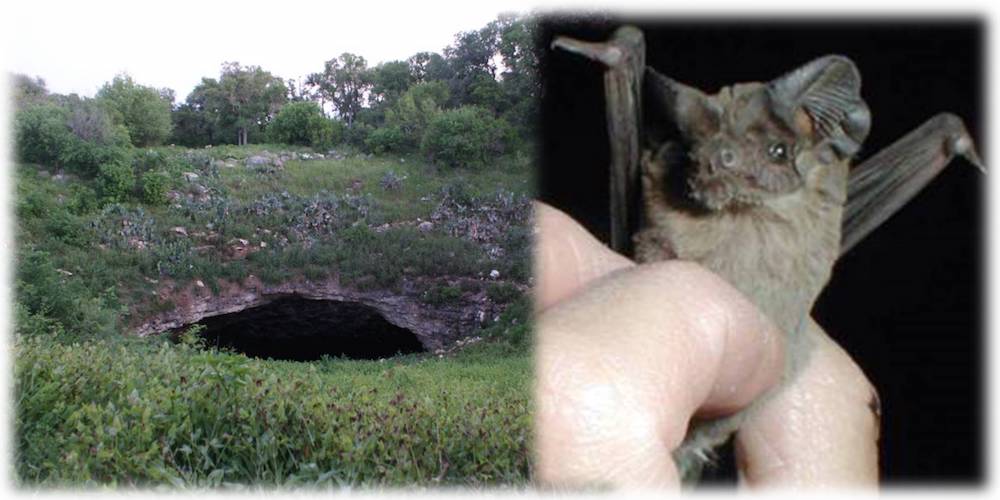Paper out on bat migration ecology
How does climate (change) affect the timing of bat migration at Bracken Cave (USA)?
Climate (change) has been repeatedly shown to strongly affect when birds migrate. For other animal taxa such as bats and insects, knowledge on the effects of climate (change) on their migration phenology remains rather limited. Perhaps the biggest obstacle is the lack of long-term phenology datasets.
Bracken Cave in Texas (USA) holds one of the largest bat colonies in the world. Using weather radar data, a unique 23-year (1995-2017) long time series was recently produced of the spring and autumn migration phenology of Brazilian free-tailed bats (Tadarida brasiliensis) at Bracken Cave (Stepanian & Wainwright, 2018).
 Left: Bracken Cave in Texas, USA (Source: Daniel Spiess, CC BY-SA 2.0, via Wikimedia Commons); Right: Tadarida brasiliensis (Source: NPS, Public domain, via Wikimedia Commons)
Left: Bracken Cave in Texas, USA (Source: Daniel Spiess, CC BY-SA 2.0, via Wikimedia Commons); Right: Tadarida brasiliensis (Source: NPS, Public domain, via Wikimedia Commons)
In Haest et al. (accepted - available online), we now analysed these migration phenology time series in combination with gridded temperature, precipitation, and wind data across Mexico and southern USA, to identify the climatic drivers of (changes in) bat migration phenology. Perhaps surprisingly, our extensive spatiotemporal search did not find temperature to influence either spring or autumn migration. Instead, spring migration phenology seems to be predominantly driven by wind conditions at likely wintering or spring stopover areas during the migration period. Autumn migration phenology on the other hand, seems to be dominated by precipitation to the east and north-east of Bracken Cave. Long-term changes towards more frequent migration-favourable wind conditions have, furthermore, allowed spring migration to occur 16 days earlier. Our results illustrate how some of the remaining knowledge gaps on the influence of climate (change) on bat migration and abundance can be addressed using weather radar analyses.
 Location and timing of the identified most important weather variables that are likely to influence spring and autumn migration timing at Bracken Cave. The timelines in each plot represent the period of the single best time window (left) and of the medians for the time window opening and closing of the 95% confidence interval of all time windows (right). P: precipitation; HW: headwind; TW: tailwind. The location of Bracken Cave is marked with a star. The white background triangles in the time window subfigures represent the migration period at Bracken Cave, i.e. the period between the earliest and latest estimated average migration time at Bracken Cave over the entire study period.
Location and timing of the identified most important weather variables that are likely to influence spring and autumn migration timing at Bracken Cave. The timelines in each plot represent the period of the single best time window (left) and of the medians for the time window opening and closing of the 95% confidence interval of all time windows (right). P: precipitation; HW: headwind; TW: tailwind. The location of Bracken Cave is marked with a star. The white background triangles in the time window subfigures represent the migration period at Bracken Cave, i.e. the period between the earliest and latest estimated average migration time at Bracken Cave over the entire study period.
The paper was covered by Daisy Dunne in the Climate Change section of the UK newspaper The Independent: “Climate crisis could be causing bats to migrate earlier, study says”.